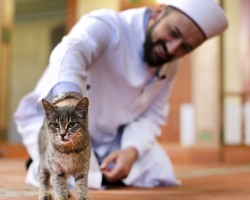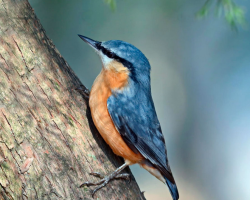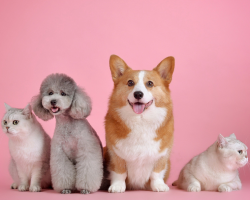What to do if the cat has wool? You will find the answer to this and other questions in this article.
Content
- The cat, the cat climbs strongly, the wool falls out: the time of molting of cats and cats
- Video: How to facilitate the molt process in cats?
- The cat, the cat climbs strongly, the wool falls out with clocks constantly, all year round, in summer and winter: Reasons
- What to do, what to feed, what to give a cat and a cat so that the wool does not climb?
- How to care for a cat and a cat so that they do not climb wool?
- Video: Flea dermatitis in cats, what to do?
The cat, the cat climbs strongly, the wool falls out: the time of molting of cats and cats
A healthy shiny hair in a cat is the pride of the owner. But what is the chagrin if the cat hair is now and then observed in all corners and places in the apartment. The problem of wool loss in cats is not a rarity. Sometimes you should not worry, but there are cases (and they often happen) when the animal should be examined. We’ll figure out in order why cats are fed and how to deal with it.
The owners of cats know that every day they have to clean the wool in a house or apartment. This is a completely natural phenomenon, people also have a certain amount of hair daily.
Important: twice a year, the coat in cats falls stronger than usual. Do not be alarmed right away, it can be a seasonal molting.
As a rule, the beginning of the seasonal molting is very scared by the "beginners". Experienced owners, who have been a pet for several years, perceive this phenomenon calmly.

Seasonal molting does not depend on the diet of the pet, the level of humidity in the house, care and other factors. Just a cat changes a summer fur coat to the winter and vice versa. This phenomenon is quite normal, and nothing needs to be done with it. The only thing you can help your pet is more often combing the wool. There is a molt in the spring and autumn. In what terms - each animal is individual.
If you saw that the cat had a molting, first examine the skin of a pet, nose and eyes. If the eyes and nose are clean, the skin is pink, there is no baldness, just wait a bit. Soon everything will return to normal.
In that case, if the problem is not as simple as it seems at first glance: the wool began to climb into the clocks, the molting dragged on, the bald spots appeared on the body of the animal - this is an occasion to see a doctor immediately.
Video: How to facilitate the molt process in cats?
The cat, the cat climbs strongly, the wool falls out with clocks constantly, all year round, in summer and winter: Reasons
The causes of abundant wool loss, which is constant, can be very different. However, they all indicate one thing: not everything is in order with the animal's body. Consider in order:
- Lack of vitamins. The diet of a cat must be balanced. Special food contains a certain amount of vitamins that are necessary for a cat's body. If you feed the cat with natural products, pay attention to the variety of diets. Sometimes, against the background of an unbalanced nutrition, allergies or dermatosis develops in cats.
- Hormonal disbalance. Often the owners suppress the sexual attraction of the cat with special drugs. In this case, a hormonal failure may happen. Together with the loss of wool, the hormonal failure gives itself the following signs: cat apathy, unwillingness to approach a bowl of food, weakness, unusual behavior.
- Lichen. Round bald spacers appear on the animal’s body, the skin in these places can be reddened or too white, there may also be scales. In this case, a visit to the veterinarian is extremely necessary, since the disease is dangerous, not only the animal suffers, but people can become infected.
- Skin ticks and helminths. A sign of skin ticks is the baldness of the muzzle, legs, ears. Pay attention to how often your cat scratches. Helminths are also a serious problem, they adversely affect the work of internal organs, and externally manifest in the form of dermatoses.
It is mistaken to believe that worms or skin ticks cannot appear in a cat that does not go outside. Even if the cat does not eat raw meat, it is not the fact that it will not become infected with worms. These parasites can be brought to the house on shoes, on clothes.

Important: another reason for the loss of wool in cats may be stress. Like people, cats are prone to experiences and overexcitation of the nervous system.
What will seem insignificant for a person, a cat can perceive painfully. This includes physical and emotional factors.
Physical factors of stress:
- Electric shock;
- Burns;
- Injuries;
- Past illnesses.
Emotional factors:
- Moving to a new place;
- The appearance of new residents (animals or people) in the house;
- Loss of the owner;
- Restriction of freedom.
These or other events can not be the reason for the loss of wool and deterioration of the cat’s condition, but it is still worth paying attention to the nervous shocks of the beloved pet.

What to do, what to feed, what to give a cat and a cat so that the wool does not climb?
When the problem of the cat’s wool falls out in the cat, the owners ask the question: what to do? Your actions in this case are required, inaction can lead to a deterioration in the health of the pet, and sometimes other households.
First of all, make sure this is not molting. If you see that the problem is serious, analyze the nutrition of the animal. Make a cat menu:
- Enter low -fat varieties of fish, meat, offal, cottage cheese and milk into the diet.
- Do not give a cat milk instead of water. Milk should act as a separate nutrition, no more than 1-2 times a week.
- Do not overfeed cats, especially the elderly.
If the cat is accustomed to ready -made feeds, it may be worth buying better food. There is also a special healing food for cats prone to dermatitis. It is impossible to find out what kind of vitamin is not enough for an animal at home. This requires a visit to the veterinary clinic.

In the event that the wool falls out, and the skin of the cat itch due to allergies, you can add to the food ⅛ Part of the suprastin tablet 2 times a day. The source of allergies, of course, needs to be found out and removed.
There are special vitamins for cats that can be given during molting, as well as with hormonal disorders. An experienced veterinarian will tell you that it is better to give specifically in your case.
If you see that a balanced diet does not help, and the cat loses more and more wool, consult a doctor. Do not neglect the consultation of a specialist, because the skin of a cat can devote to people, for example, mycosis. Proper diagnosis and the appointment of suitable treatment will help to cure a pet rather.
If the pet was found lichen, vones and other parasites that live on the body, take care not only about treatment, but also about the disinfection of the dwelling. Furniture, carpets should be thoroughly disinfected, and the bedding of the animal should be replaced by a new one.

How to care for a cat and a cat so that they do not climb wool?
Below are general recommendations that will help maintain the health of the cat’s skin and have a strong and shiny fur coat:
- Follow the food of the cat, enrich the diet with vitamins and minerals.
- If you buy ready -made food, choose high -quality, do not flatter yourself with a low price.
- Buy a cat, do not forget to comb your hair regularly.
- Follow the cleanliness of the litter of the animal.
- Increase the cat from dermatomycosis.
- Give the drugs from worms, according to the pattern of a doctor.
Now you know how to act and what to pay attention to if the cat has wool. Correct care and care for the pet will provide him with a healthy, and a calm life for you.







